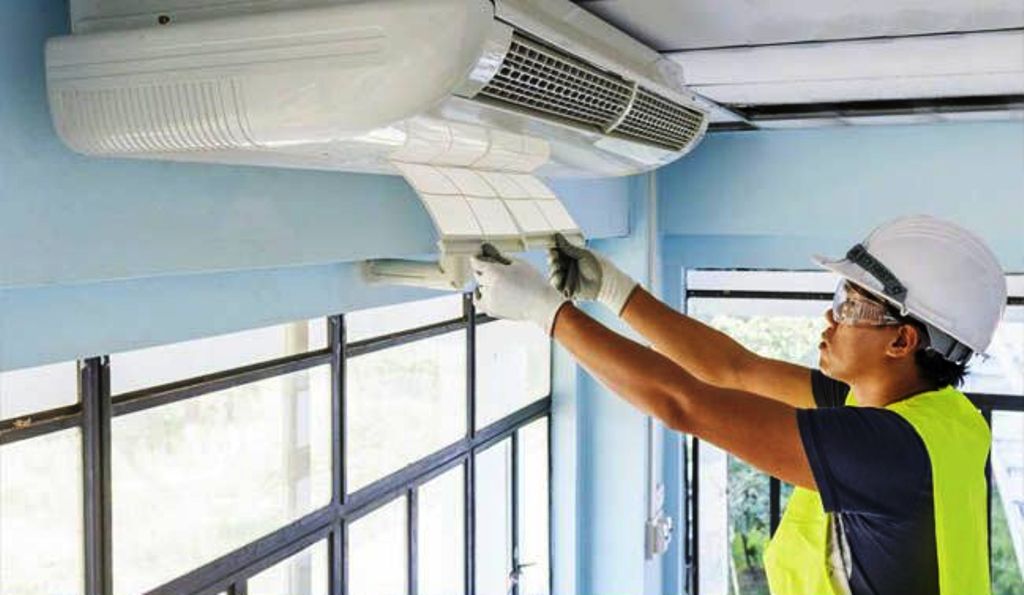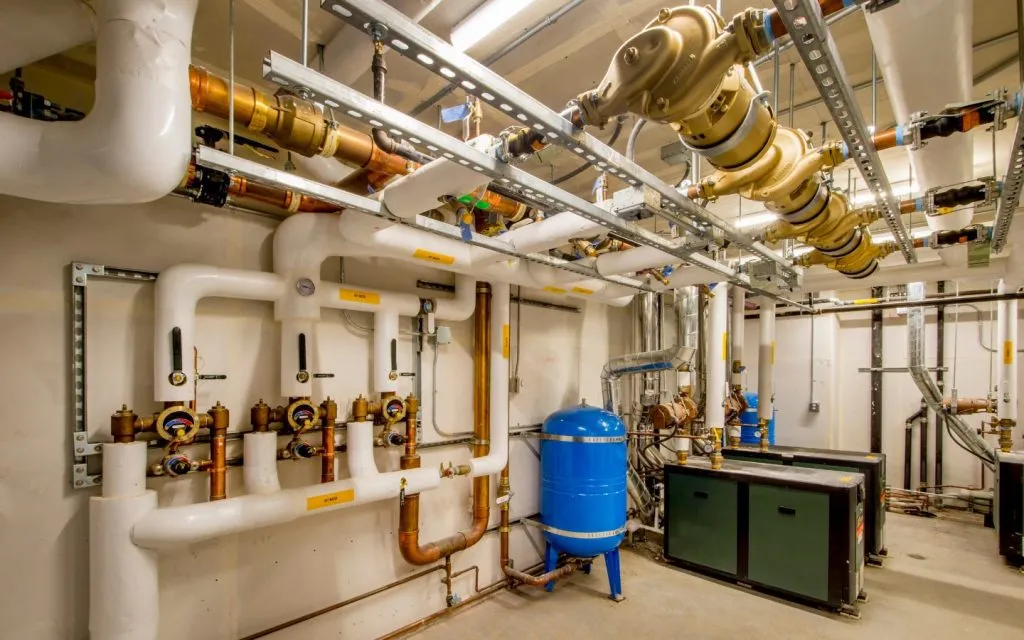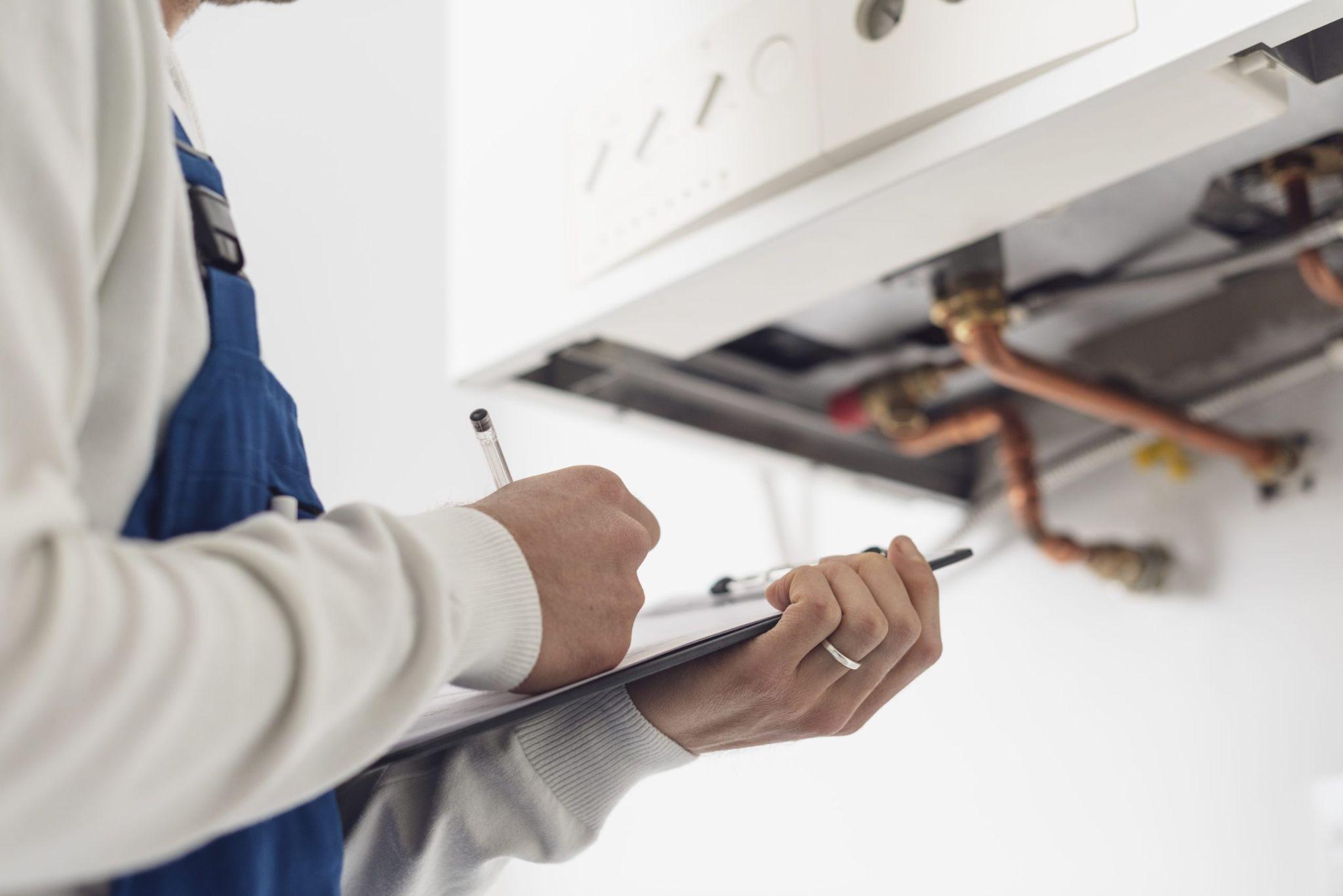Learning
How to Replace an Air Conditioner Filter and Clean Your Condenser Coils

Being able to maintain your air conditioner system yourself can save you a lot of money in the long run.You’ll be able to minimize how often you need to call a professional to replace full parts of the system if you’re regularly checking on the basics yourself. You’ll also be able to save on having someone else come and do some of the more simple tasks you can learn to do yourself.
Replacing filters
The number one issue that air conditioning has that will reduce its efficiency and could lead to it breaking is dirty filters. Air conditioners have filters as a part of the airflow system that removes any dust or debris from the air. This, in turn, increases the quality of the air being pumped around your house. As the air is filtered, the filters will slowly gather dust, and if left unchanged, less air will be able to get through them over time.
Regularly replacing these filters is essential for maintaining the efficiency and longevity of your AC unit. However, if you notice reduced airflow or other signs of a struggling AC system despite changing the filters, it may be time to seek professional assistance. AC repair specialists can diagnose and address any underlying issues to ensure your system operates efficiently and effectively, keeping your home cool and comfortable.
This will reduce the efficiency of your air conditioning in general as less air can flow through the ducts. In turn, you’ll be spending more in power to keep the same amount of air cooled. To keep the efficiency of your air conditioner at its best, it’s recommended that you check and change them at least every six months.
To start with, check them every couple of months to get a feel for how long your particular filters need before they need changing or cleaning.
Reliable Supplier
Start by locating the filters, which are usually found around the registers at the ceiling of each where the cool air is delivered. Before you do anything, make sure that the power has been turned off and that you avoid any of the electrics. Unlatch the cover of the register and open the door.
Once you’ve done this, you’ll see the filter, which can be removed and thrown away if they are disposable. Take this opportunity to clean the grille before you install a new filter. With this done, take your new filter and install, making sure to follow the specific instructions for your filter.
You can get filters for most systems from aclube or a similar supplier. There will often be arrows to show you which way to place it. Once you’ve inserted the new filter, you can attach the grille back on to the register. A great tip is to add the date you replaced the filter directly on the filter. This will help you keep track of how long it has been and when you need to install a new one.
How to Clean Air Conditioner Condenser Coils
After the filters, the condenser coils on your air conditioning unit are one of the most important parts to maintain. Cleaning the conditioning coils will help maintain the efficiency of your system and minimize the costs to power it.
How often should the condenser coils be cleaned, and how long will it take?
Depending on where you live, it’s recommended that you clean your condenser coils at least once a year. If you live somewhere with a lot of flowers or trees with pollen, then two to three times a year may be needed. The main culprit you need to look out for in your condenser is dandelions and other similar cotton flowering plants.
These can blow into your unit with ease and cause all kinds of harm. Also, if left for long enough, debris like dried cut grass and leaves make their way into your outdoor unit and damage your condenser coils. To ensure the efficiency of your unit, and to make sure that it keeps working correctly, this is a high priority task that could save you thousands.
You’ll need some tools
When cleaning your condenser coils, you’ll need some standard tools, including screwdrivers and a wrench, to get into the unit itself. To do the cleaning, you’ll need a garden hose or pressure washer, some cleaner that foams when you spray it, and a cooling fin comb as an optional extra.
You’ll also need a brush that isn’t too stiff to clean your cooling fins. The whole process will take an hour or two, depending on the last time you cleaned your system and how dirty it has become. If you get into your air conditioner and find that the job looks too much for you or will take too long, hiring a professional may be a good use of your time.
The best time to clean your air conditioner is just before the summer to make sure that it’s in full working order before you need to use it regularly. Try to get a full service of your air conditioner done well before it starts to get hot enough to use your air conditioning, as you may find that there are parts that need to be replaced or fixed to get it through the next summer.
The last thing you want is to turn your air conditioning on one day in the middle of summer to find that it isn’t working, and that you need to find someone to fix it for you while you sweat.
Cleaning the Condenser Coil Yourself
The first thing to do is to turn the air conditioning off. The main power will be at the switch panel, and you can also turn the thermostat off. It’s recommended that you do both of these. Once turned off, you can get to work, but be mindful not to touch any electrics when possible as you work. The first thing to do is to clear out all of the debris around the outdoor unit. This is to maximize airflow that can be blocked off by things like grass clippings and leaves.
Once you’ve cleared the debris, you can get into the unit itself. There will generally be several bolts or screws to let you get into the main section of the outdoor unit at either the top or the side. As you’re opening the panel, be careful not to damage anything as the motor for the fan can sometimes be attached to it.
Once you’re into the unit, you’ll see that more debris will have made it into the case. Take a vacuum made for outdoor use and suck up all of this, and then gently vacuum the cooling fins as well, taking care not to bend them.
Coil Cleaners
Once all the main debris has been cleaned away, you can start cleaning. Coil cleaner can be bought for relatively cheap, and this is what you’ll want to use to clean the fins and coils. Take this and cover all of the outside of the coil and fins and around the vents. If you don’t have any coil cleaner, then a mixture of water and detergent will also work. Leave this to soak for a few minutes, and then spray off with your garden hose.
Do this from the inside of the case out to get as much dirt out of the machine as possible. As you do this, take care not to spray the compressor directly when possible. It generally isn’t necessary to spray the outer case of the unit, as this will shoot more debris and dirt back inside.
The next step is to clean the cooling fins and make sure that they are straight. This may be the most time-consuming part of the process, and you’ll need to use a cooling fin comb to get the job done. While this will take a while, it will make a difference in the efficiency of the whole system, and they are an important part of your air conditioning unit.
Straighten cooling fins
Try to make any fins as straight as possible. It’s worth the time. If you’re not sure what cooling fan comb you need, you’ll have to figure this out. Take a tape measure and count how many fins there are in an inch. This is the tooth count you’ll need for the comb that you buy.
Once you’ve straightened the fins as much as possible, then it’s time to reassemble the unit. This should be a relatively simple task of putting the top back on and screwing it back in. Once this is back on, you can turn the main power switch back on, as well as the thermostat.
It’s a good idea to turn your air conditioner on and check for any noises. Also to generally see if everything is working correctly. If anything doesn’t sound normal, then it’s recommended that you call a professional to see what the problem is. Maintaining your air conditioner can take a little bit of time. However it’s worth it to make your system more efficient and last longer.
Learning
First-Time Buyer’s Guide to the UK Property Market

Entering the UK property market as a first-time buyer can feel both exciting and daunting. The process is filled with potential pitfalls and complex decisions, but with the right guidance, it can be navigated smoothly. The estate agents in Yorkshire demystify the journey from the initial decision to buy a home to the moment you step over the threshold of your new property.
Understanding Your Financial Position
The first and perhaps most crucial step in the home-buying process is understanding your financial situation. This includes assessing your savings, income, and current debts. Here’s how you can prepare:
1. Deposit: Generally, you’ll need at least 5% of the property price as a deposit, though aiming for 10% or more can provide better mortgage rates.
2. Income and Expenses: Use a budget planner to assess your monthly income against your expenses. This will help you understand how much you can afford in monthly mortgage repayments.
3. Credit Score: Lenders will evaluate your credit score to determine your mortgage eligibility. So it’s important to have a good credit score, and you should work on it if required.
4. Mortgage Options: Speak to a mortgage advisor to understand different types of mortgages, such as fixed-rate, variable-rate, and help-to-buy schemes.
Getting a Mortgage Agreement in Principle
A Mortgage Agreement in Principle (AIP) is a statement from a lender indicating how much they’ll likely lend you. You will be a more attractive buyer with an AIP as it shows sellers you’re serious and financially prepared.
Deciding What You Want
Before you start viewing properties, it’s essential to know what you’re looking for. Consider the following factors:
1. Location: Proximity to work, schools, public transport, and amenities are key. Research neighbourhoods to find the best fit for your lifestyle.
2. Property Type: Decide whether you want a flat, terraced house, semi-detached, or detached property. Each has its pros and cons.
3. Must-Haves: Make a list of non-negotiables, such as the number of bedrooms, garden size, and parking facilities.
4. Future Proofing: Consider your future needs. Are you planning to start a family? Do you need space for a home office?
Starting the Property Search
With a clear idea of what you’re looking for, you can begin your property search. Here are some tips:
1. Use Online Portals: Websites like Rightmove, Zoopla, and OnTheMarket are excellent starting points. Set up alerts to get notified of new listings that meet your criteria.
2. Visit Estate Agents: Register with local estate agents who can provide insights into the market and inform you of new properties before they’re listed online.
3. Attend Viewings: Don’t rush this part. Visit several properties to get a feel for what’s available in your price range.
Making an Offer
Once you find a property you love, it’s time to make an offer. Here’s how to approach it:
1. Research: Check the selling prices of similar properties in the area to gauge a fair offer.
2. Negotiate: Don’t be afraid to negotiate. The starting point is most usually the asking price.
3. Conditions: You might include conditions in your offer, such as the inclusion of certain fixtures or a specific moving date.
The Legal Process
If your offer is accepted, the legal process begins. You’ll need a solicitor or licensed conveyancer to handle the legalities. Here’s what to expect:
1. Conveyancing: This is the legal transfer of property ownership. Your solicitor will handle this, including conducting searches, dealing with the Land Registry, and transferring the funds.
2. Surveys and Inspections: Arrange for a property survey to check for structural issues. There are different types of surveys, from basic condition reports to full structural surveys.
3. Mortgage Finalisation: Once the survey is complete and satisfactory, your mortgage can be finalised.
4. Exchange of Contracts: This is when the sale becomes legally binding. You’ll pay your deposit at this stage.
5. Completion: On the agreed completion date, the remaining money is transferred, and you receive the keys to your new home.
Moving In
Moving day can be hectic, but planning can ease the stress:
1. Hire a Removal Company: Book a reliable removal company well in advance. Discover the best deals by getting quotes from multiple companies.
2. Pack Strategically: Label your boxes by room and keep essential items accessible.
3. Notify Utilities and Change Address: Inform your utility providers of your move date and update your address with banks, the DVLA, and other important institutions.
Settling In
Get settled. Introduce yourself to the neighbours, familiarise yourself with the local area, and really start to make the place your own.
Here are a few final tips:
1. Safety Checks: Make sure that your smoke alarms and carbon monoxide detectors are working, and make sure that you know where the gas and electricity meters are located.
2. Maintenance Plan: Keep a record of the smooth functioning of your new home with a maintenance schedule, complete with regular checks and seasonal tasks.
3. Personal Touches: Add personal touches to make the space feel like home. This can be from putting up family photos or redoing the decoration in your rooms.
Conclusion
Buying your very first home in the UK is most definitely a milestone, difficult and full of challenges but rewarding in the end. Such a philosophy guides you in understanding finances and knowing what you want to achieve from detailed research, and seeking professional advice that confidently helps you navigate the property market. Yes, the journey may have its hurdles, but in the end—owning your own home—the reward will be worth the effort. Welcome to your new chapter!
SEE ALSO: Conquer the Chaos: Hacks to Clean Your Home in Half the Time
Learning
5 Health Benefits of Regular Pedicures

There’s nothing quite like a pedicure to keep your feet looking and feeling their best, but did you know that pedicures do more than simply enhance the appearance of your feet? Many people don’t realize that regular pedicures can come with a wide range of health benefits that can promote the well-being of your feet, so here are some ways that your routine pedicure keeps both your toenails and feet in the best condition possible!
Smoother Skin
One of the biggest misconceptions about pedicures is that they only cater to and look after your toenails. While you’ll definitely be leaving each session with a fresh coat of nail polish, your pedicure can also do wonders for the health of your skin. Aside from trimming and shaping your nails and cuticles, you’ll notice that your nail technician also dedicates a few steps to the skin of your feet.
After inspecting your feet and looking for any issues or imperfections that may need to be addressed, your technician will work on an exfoliating scrub to remove any dead skin cells. This step may also be aided by a foot file, which can be used to buff away any calluses and other problem areas manually.
Softer Skin
After your nail technician addresses all the problem areas of your feet and removes any unwanted dead skin cells, he or she will often massage in a moisturizing product, such as lotion, cream, or butter, to ensure that your skin is properly moisturized. These products contain skin-loving ingredients that will ensure that your feet have everything they need to look and feel their best so that you can walk out of your pedicure with a renewed sense of confidence.
Healthier Nails
After your pedicure session, your nails will not only look better due to the fresh coat of nail polish, but they’ll also be healthier and stronger. This is because your nail technician takes their time to ensure that your nails are properly looked after through steps that include deep cleaning, nail trimming, nail filing, and cuticle care. All of these things work together to prevent issues like ingrown nails from occurring, all the while improving the appearance of your nails.
Increased Blood Circulation
While the specific steps included in your pedicure will depend on the beauty salon, most pedicures will have a massage step somewhere in the mix. One of the often overlooked benefits of these massages is the increased blood circulation, which can deliver more nutrients and oxygen to your feet and nails, promoting their health and appearance. Aside from that, better blood flow means reduced tension and soreness, as well as better distributed heat throughout your body.
Reduced Infections
A significant amount of dirt and bacteria can build up on your feet without you even realizing it, but pedicures can be a great way to prevent these from happening in the first place. The exfoliation step of a pedicure removes dead skin cells as well as all the debris that may have accumulated underneath, and the deep cleaning of your toenails and cuticles also gets rid of any impurities that may have slipped beneath them, which can stop infections from happening.
These are some of the many health benefits that you can look forward to at your next pedicure appointment. However, it’s worth noting that you need to book regular sessions to truly reap all the rewards. This can be difficult, especially when you don’t feel like driving to your nearest nail salon after a long day, but the good news is that you can enjoy the salon experience in the comfort of your own home with a home pedicure service.
Learning
Commercial Boiler Installation Services London

For businesses in the bustling city of London, having a reliable heating system is crucial. Whether you’re opening a new office, expanding your current premises, or simply upgrading an outdated system, commercial boiler installation services for businesses in London are essential to ensure your operations run smoothly and efficiently. Proper installation and maintenance of commercial boilers can make a significant difference in energy efficiency, cost savings, and the overall comfort of your workspace.
The Importance of Professional Installation
When it comes to installing a commercial boiler, professional expertise is paramount. Here’s why:
- Efficiency and Performance: Professional installation ensures that your boiler operates at peak efficiency, reducing energy consumption and lowering utility bills. A well-installed boiler can effectively meet the heating demands of your business without unnecessary energy waste.
- Safety: Commercial boilers are complex systems that require precise installation to operate safely. Professional installers adhere to stringent safety standards and regulations, minimizing the risk of accidents and ensuring the safety of your employees and premises.
- Compliance with Regulations: Commercial properties are subject to various building codes and regulations. Professional installers are well-versed in these requirements and ensure that your boiler system complies with all local laws and standards.
- Longevity and Reliability: Proper installation is critical to the longevity and reliability of your boiler. A professional installation can prevent common issues such as leaks, pressure problems, and system failures, ensuring that your boiler runs smoothly for years to come.
Key Considerations for Commercial Boiler Installation
When planning for a commercial boiler installation, several factors need to be considered:
- Type of Boiler: The type of boiler you choose will depend on your business’s specific needs. Options include gas boilers, oil boilers, and electric boilers, each with its own set of advantages. Consulting with a professional can help you determine the best choice for your business.
- Sizing and Capacity: The boiler’s size and capacity must match the heating demands of your commercial space. An undersized boiler will struggle to meet your needs, while an oversized one will lead to inefficiencies and higher costs.
- Location: The placement of your boiler affects its efficiency and accessibility for maintenance. Professional installers can help you choose the optimal location for your boiler.
- Integration with Existing Systems: If you’re upgrading or replacing an existing boiler, it’s essential to ensure compatibility with your current heating system. Professional installers can seamlessly integrate the new boiler with your existing setup.
Choosing the Right Installation Service

Selecting the right installation service provider is crucial to the success of your boiler installation project. Consider the following when making your choice:
- Experience and Expertise: Look for a provider with a proven track record in commercial boiler installations. Experienced installers can handle the complexities of commercial systems and provide high-quality workmanship.
- Reputation: Check reviews and testimonials from previous clients to gauge the provider’s reliability and customer satisfaction.
- Comprehensive Services: Choose a provider that offers a full range of services, including installation, maintenance, and repair. This ensures that all your boiler needs are met by a single, trusted source.
In London, ROWLEN is a reputable name known for delivering top-notch commercial boiler installation services. Their team of experts is dedicated to providing efficient, safe, and compliant installations tailored to the unique needs of businesses.
Conclusion
Investing in professional commercial boiler installation services for businesses in London is essential for ensuring efficiency, safety, and long-term reliability. By choosing an experienced and reputable service provider like ROWLEN, you can rest assured that your heating system will be installed correctly and maintained to the highest standards. Proper installation not only enhances the performance of your boiler but also contributes to the overall comfort and productivity of your business environment.
SEE ALSO:
-

 News3 years ago
News3 years agoLet’s Know About Ultra High Net Worth Individual
-
Entertainment1 year ago
Mabelle Prior: The Voice of Hope, Resilience, and Diversity Inspiring Generations
-

 Health3 years ago
Health3 years agoHow Much Ivermectin Should You Take?
-

 Tech2 years ago
Tech2 years agoTop Forex Brokers of 2023: Reviews and Analysis for Successful Trading
-

 Lifestyles2 years ago
Lifestyles2 years agoAries Soulmate Signs
-

 Health2 years ago
Health2 years agoCan I Buy Ivermectin Without A Prescription in the USA?
-

 Movies2 years ago
Movies2 years agoWhat Should I Do If Disney Plus Keeps Logging Me Out of TV?
-

 Learning2 years ago
Learning2 years agoVirtual Numbers: What Are They For?
